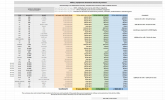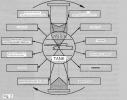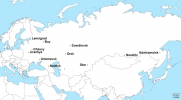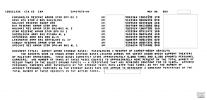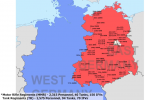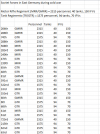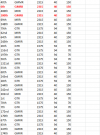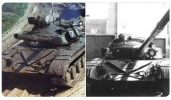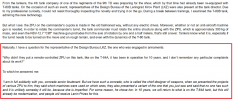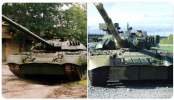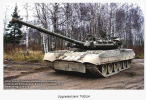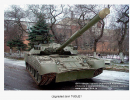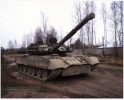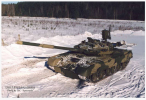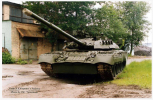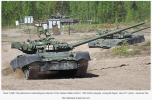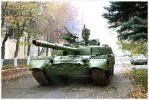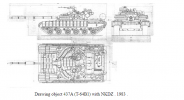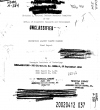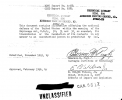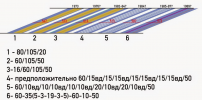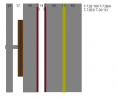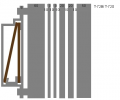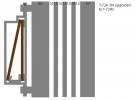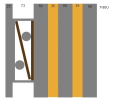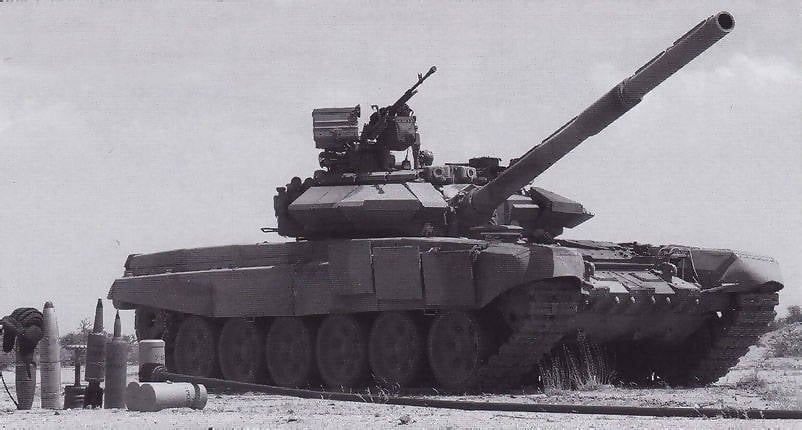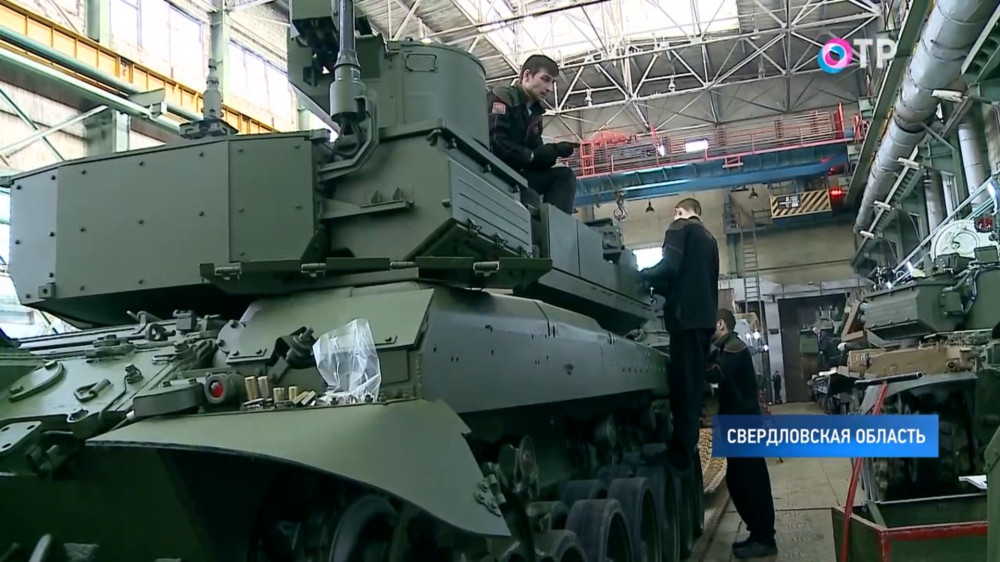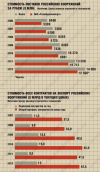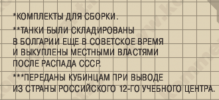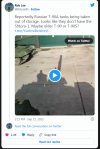Antares
Respected Leader
Tässä vielä jatkoa edelliseen viestiin. Kirjoitin toisessa ketjussa Venäjän ilmavoimien hävittäjäkoneiden määristä sekä uusien koneiden hankinnoista per vuosi. LINKKI
En ala toistamaan mitä kirjoitin viestissä, sen voi lukea halutessaan linkin takaa mutta lainaan pari kuvaa.
Venäjän ilmavoimille luovutetut konemäärät (uudet koneet) viimeisen 14 vuoden aikana: LÄHDE

Jos taas otetaan karkea kokonaismäärä, josta jätetään pois Yak-130 koulutuskoneet niin saadaan tällainen kuvaaja:

Vuoden 2009 MiG-29SMT ja MiG-29UBT piti mennä alunperin vientiin, mutta asiakas kieltäytyi ostamasta joten putosivat Venäjän ilmavoimille "vahingossa". Punainen käyrä kuvaa siis heidän "omaa hankintamäärää" joka kertoo tavoitteista ilman tuota poikkeusta. Todellinen konemäärä tietysti sisältää nuo koneet, koska ne jäi heidän käyttöönsä.
Hävittäjäkoneet ovat toki ihan eri laitoksia jos vertaa vaikka panssarivaunuihin, toisen kohdalla puhutaan miljoonista kun taas toinen on kymmeniä miljoonia.
Olen silti viime aikoina tuumaillut että tämä uusien hävittäjien käyrä saattaa kuvata hyvin muitakin asejärjestelmien hankintoja tällä aikavälillä. En tarkoita määrien osalta vaan kuvaajan muodon osalta eli aikavälillä 2013-2017 olisi tällainen huippu (tai "parhaat vuodet"). En ole tehnyt vertailua muiden tunnettujen kalustohankintojen kanssa, mutta "tuntuma" on että näin voisi olla.
Jos katsoo edellisessä viestissä käsiteltyä kuvaa БТРЗ № 61 pajan "vuosituotannosta" niin sanoisin että heidän remontoimat määrät kasvoivat pysyvästi vuonna 2007 ja kasvoivat tästä vakiotilasta merkittävästi vuonna 2014:

2000 - 57
2001 - 108
2002 - 108
2003 - 79
2004 - 58
2005 - 61
2006 - 47
2007 - 106
2008 - 91
2009 - 128
2010 - 114
2011 - 114
2012 - 115
2013 - 107
2014 - 187
2015 - 188
Taulukko loppuu kesken, mutta en voi olla miettimättä, koskeeko näitä "remonttipajoja" samanlainen huippu kuin hävittäjäkoneita eli vuoden 2018 jälkeen palattaisiin "huippua edeltäneeseen tilaan" eli ehkä 100-115 per vuosi? Tai ehkä vanhempien vaunujen remontointi on niin halpaa ja se koettiin niin tärkeäksi että vuoden 2014 lukema edustaa "uutta normaalia" joka on jatkunut siitä vuodesta aina Ukrainaan hyökkäämiseen asti tällä tasolla eli 187 per vuosi tai enemmän?
Jos katsotaan samasta taulukosta pelkästään T-72 ja T-80 vaunujen määrä per vuosi niin se näyttää tältä:
2000 - 9
2001 - 22
2002 - 24
2003 - 12
2004 - 8
2005 - 11
2006 - 10
2007 - 66
2008 - 4
2009 - 75
2010 - 55
2011 - 111
2012 - 105
2013 - 107
2014 - 187
2015 - 167
Näiden määrien kasvu on selvästi rajumpaa ja taulukosta käy myös ilmi että toimintaa olisi virtaviivaistettu: БТРЗ № 61 paja siirtynyt tekemään pääasiassa T-72 ja T-80 remonttia vuoden 2010 jälkeen - oletan tietysti että muut vaunutyypit joita he ovat aikaisemmin korjanneet (ainakin osaksi) ovat siirtyneet toisten pajojen remontoitaviksi. Tätä voisi kutsua erikoistumiseksi, kun hoidetaan tiettyjen ajoneuvojen huollot sen sijaan että huollettaisiin pienet määrät suurta valikoimaa.
-
Tästä palaa luonnollisesti takaisin Altyn73 numeroihin eli mitä vaunuja heidän aktiivijoukoilla oli käytössä syyskuussa 2021. JOS olettaa että hänen numeronsa ovat oikein niin tästä ajanhetkestä taaksepäin kelaamalla voisi pystyä arvioimaan heidän panssarijoukkojen kaluston koostumusta tyypeittäin eri vuosina (silloin pitää arvioida modernisoitujen vaunujen määrät per vuosi per tyyppi sekä uustuotanto, mikä on helpompaa koska tarvitsee huomioida vain T-90A vaunut).
Mikä nostaa taas pinnalle saman kysymyksen, joten olen pyöritellyt aikaisemmin: kuinka kauan Venäjän aktiivijoukot käyttävät panssarivaunua ennen kuin se viedään remontoitavaksi?
Lainaan tämän ketjun toisesta viestistä osan, joka käsittelee T-54 ja T-55 vaunun "elinikää" tosin Neuvostoliiton aikana (alleviivaus minun): LINKKI
Once the vehicles were in service, there were set times and levels of repairs needed called TO-1, TO-2 and Capital Rebuilding. They were rebuilt under the capital rebuilding programme of the Soviet Army. Given the years listed and numbers, it is probable these tanks were all given major upgrades. The T-54s would be upgraded to T-54AM standards and the T-55s to any of the T-55M, T-55AM, T-55MV or T-55AMV standards. While some were to be retained for either reserve status, or for use with Soviet Naval Infantry in the case of the T-55AMV tanks, others would be sold abroad after the 1991 downfall of the Soviet Union.
Tanks were maintained as per four levels of maintenance that determined when they would be rebuilt.
The first level was daily technical inspection (EhTO) and covered routine tank operations on a daily basis. The checks included lubrication as defined in the maintenance manual, checking fluid levels for hydraulics, coolant and lubricants, track tension, air cleaner and in line filters, and any missing or damaged parts. This was crew level maintenance.
Technical Inspection 1 (TO-1) was carried out at set points of operation (either by mileage, time on the engine or usage period) and was more detailed, covering adjustments to the sights, equipment, brakes, track tension and condition of track shoes, hoses, lines, and most critical components. This was company level maintenance.
Technical Inspection 2 (TO-2) was more detailed than TO-1 and called for co ordinated work by higher level technical personnel with specialized equipment to adjust, align and service most key components of the tank. It could include bore-sighting the gun, aligning the IR equipment, checking radio and intercom operation, and replacing any worn out or service limited items. This was regimental or division level maintenance.
Capital rebuilding took place after the tank had covered 5,000 to 10,000 kilometres (based on tank model) or completed ten years of service. The tank would be shipped back to a specialized rebuilding plant where it would be stripped down and completely examined from the ground up. Worn out or obsolete components would be replaced, rebuilt engine and transmission installed, lines and hoses replaced, and any new upgraded components introduced at that time. These could include RMSh tracks in place of OMSh tracks, new road wheels, upgraded radio systems (R-123/R-173 for the older R-113, R-134 for the older R-112 in command tanks), new sights, thermal sleeves for the gun, smoke grenade launchers, demand fuel feed systems for the 200 litre auxiliary tanks, an NVST machine gun in place of the DShKM, and PKTs in place of the SGMs. Most tanks would have been limited to one capital rebuilding in their lifetime, but T-55s seem to have had two – especially if they were going to be sold to a foreign client.
While in service, there were four categories of serviceability for the tanks:
• Category 1: vehicle is new, fully combat capable, all systems are fully operational, all spare parts and tools are in place, and the vehicle is ready to go.
• Category 2: vehicle is used, mostly combat capable, needs some minor repairs to some systems, may be missing some spare parts and tools, but could stand in a combat formation.
• Category 3: vehicle is in need of major repairs; some combat systems are inoperable or no longer present in the vehicle, it is missing most of its spare parts and tools, and would not be sufficiently capable of conducting combat.
• Category 4: vehicle is nearly inoperable, suffers from major failures of key systems (engine, driveline, gun, operating mechanisms) and needs capital repair or rebuilding.
There is a Category 5, which signifies the vehicle has been written off (peacetime) or is a ‘non-returning combat loss’ (wartime). In some cases, vehicles in this condition were stripped of most running gear, supporting systems, and electronics, and then dug in as pillboxes or firing points in fortified regions such as along the mainland Chinese border or on Soviet Sakhalin Island in the Pacific Ocean.
-
Erityisesti eri panssarivaunuperheiden välillä on tietysti suuria eroja huollon tarpeen osalta. Tässä toinen taulukko tämän ketjun yhdestä viestistä: LINKKI

En ota kantaa tämän luotettavuuteen, koska en ole kyennyt löytämään tämän alkuperäista lähdettä (ehkä Yandex-haku löytäisi jotain?).
Tässä on "maintenance" eli perushuollon välit kerrottu kilometreinä ja näissä on suuresti vaihtelua MUTTA "overhaul" eli suuremman remontin aikaväli on lopulta aika samassa linjassa. Vanhempien vaunuperheiden osalta 10 000 km mutta T-72A jälkeen se olisi 12 000 km.
Päteekö silti kaikkien vaunuperheiden osalta sama kuin tuossa lainauksessa T-54 ja T-55 vaunuista eli X määrä kilometrejä TAI kymmenen vuotta? Onko kymmenen vuotta nykyäänkin ns. taikasana kun mietitään näitä isompia remontteja?
JOS Altyn73 on oikeassa blogikirjoituksensa osalta, niin kertooko tämä siitä että siinä kuvailtu panssarivaunujen määrä ja koostumus on viimeisen kymmenen vuoden aikana modernisoidut ja remontoidut vaunut? Heidän aktiivijoukoillaan on 2 800 - 3 300 kpl panssarivaunuja, riippuen siitä miten lasketaan joten tämä tarkoittaisi että yhden vuoden aikana pitäisi modernisoida ja remontoida 280-330 kpl tai enemmän vaunuja JOTTA kyettäisiin korvaamaan remontoitavaksi siirtyvä vaunumäärä.
Tiedetään että he eivät ole modernisoineet näin suurta määrää, vuosi 2021 oli ennätysvuosi minun tietojen mukaan ja silloin modernisoitiin väitetysti 240 kpl vaunuja. Toisaalta remontointi on helpompaa ja halvempaa kuin modernisointi joten olisi helppo uskoa että remontoisivat helposti ainakin 200 vaunua per vuosi, ehkä enemmänkin. Toki nämä tehdään tilauksesta ja jonkin suunnitelman mukaan eikä vain tekemisen ilosta.
En ala toistamaan mitä kirjoitin viestissä, sen voi lukea halutessaan linkin takaa mutta lainaan pari kuvaa.
Venäjän ilmavoimille luovutetut konemäärät (uudet koneet) viimeisen 14 vuoden aikana: LÄHDE
Jos taas otetaan karkea kokonaismäärä, josta jätetään pois Yak-130 koulutuskoneet niin saadaan tällainen kuvaaja:
Vuoden 2009 MiG-29SMT ja MiG-29UBT piti mennä alunperin vientiin, mutta asiakas kieltäytyi ostamasta joten putosivat Venäjän ilmavoimille "vahingossa". Punainen käyrä kuvaa siis heidän "omaa hankintamäärää" joka kertoo tavoitteista ilman tuota poikkeusta. Todellinen konemäärä tietysti sisältää nuo koneet, koska ne jäi heidän käyttöönsä.
Hävittäjäkoneet ovat toki ihan eri laitoksia jos vertaa vaikka panssarivaunuihin, toisen kohdalla puhutaan miljoonista kun taas toinen on kymmeniä miljoonia.
Olen silti viime aikoina tuumaillut että tämä uusien hävittäjien käyrä saattaa kuvata hyvin muitakin asejärjestelmien hankintoja tällä aikavälillä. En tarkoita määrien osalta vaan kuvaajan muodon osalta eli aikavälillä 2013-2017 olisi tällainen huippu (tai "parhaat vuodet"). En ole tehnyt vertailua muiden tunnettujen kalustohankintojen kanssa, mutta "tuntuma" on että näin voisi olla.
Jos katsoo edellisessä viestissä käsiteltyä kuvaa БТРЗ № 61 pajan "vuosituotannosta" niin sanoisin että heidän remontoimat määrät kasvoivat pysyvästi vuonna 2007 ja kasvoivat tästä vakiotilasta merkittävästi vuonna 2014:
2000 - 57
2001 - 108
2002 - 108
2003 - 79
2004 - 58
2005 - 61
2006 - 47
2007 - 106
2008 - 91
2009 - 128
2010 - 114
2011 - 114
2012 - 115
2013 - 107
2014 - 187
2015 - 188
Taulukko loppuu kesken, mutta en voi olla miettimättä, koskeeko näitä "remonttipajoja" samanlainen huippu kuin hävittäjäkoneita eli vuoden 2018 jälkeen palattaisiin "huippua edeltäneeseen tilaan" eli ehkä 100-115 per vuosi? Tai ehkä vanhempien vaunujen remontointi on niin halpaa ja se koettiin niin tärkeäksi että vuoden 2014 lukema edustaa "uutta normaalia" joka on jatkunut siitä vuodesta aina Ukrainaan hyökkäämiseen asti tällä tasolla eli 187 per vuosi tai enemmän?
Jos katsotaan samasta taulukosta pelkästään T-72 ja T-80 vaunujen määrä per vuosi niin se näyttää tältä:
2000 - 9
2001 - 22
2002 - 24
2003 - 12
2004 - 8
2005 - 11
2006 - 10
2007 - 66
2008 - 4
2009 - 75
2010 - 55
2011 - 111
2012 - 105
2013 - 107
2014 - 187
2015 - 167
Näiden määrien kasvu on selvästi rajumpaa ja taulukosta käy myös ilmi että toimintaa olisi virtaviivaistettu: БТРЗ № 61 paja siirtynyt tekemään pääasiassa T-72 ja T-80 remonttia vuoden 2010 jälkeen - oletan tietysti että muut vaunutyypit joita he ovat aikaisemmin korjanneet (ainakin osaksi) ovat siirtyneet toisten pajojen remontoitaviksi. Tätä voisi kutsua erikoistumiseksi, kun hoidetaan tiettyjen ajoneuvojen huollot sen sijaan että huollettaisiin pienet määrät suurta valikoimaa.
-
Tästä palaa luonnollisesti takaisin Altyn73 numeroihin eli mitä vaunuja heidän aktiivijoukoilla oli käytössä syyskuussa 2021. JOS olettaa että hänen numeronsa ovat oikein niin tästä ajanhetkestä taaksepäin kelaamalla voisi pystyä arvioimaan heidän panssarijoukkojen kaluston koostumusta tyypeittäin eri vuosina (silloin pitää arvioida modernisoitujen vaunujen määrät per vuosi per tyyppi sekä uustuotanto, mikä on helpompaa koska tarvitsee huomioida vain T-90A vaunut).
Mikä nostaa taas pinnalle saman kysymyksen, joten olen pyöritellyt aikaisemmin: kuinka kauan Venäjän aktiivijoukot käyttävät panssarivaunua ennen kuin se viedään remontoitavaksi?
Lainaan tämän ketjun toisesta viestistä osan, joka käsittelee T-54 ja T-55 vaunun "elinikää" tosin Neuvostoliiton aikana (alleviivaus minun): LINKKI
Once the vehicles were in service, there were set times and levels of repairs needed called TO-1, TO-2 and Capital Rebuilding. They were rebuilt under the capital rebuilding programme of the Soviet Army. Given the years listed and numbers, it is probable these tanks were all given major upgrades. The T-54s would be upgraded to T-54AM standards and the T-55s to any of the T-55M, T-55AM, T-55MV or T-55AMV standards. While some were to be retained for either reserve status, or for use with Soviet Naval Infantry in the case of the T-55AMV tanks, others would be sold abroad after the 1991 downfall of the Soviet Union.
Tanks were maintained as per four levels of maintenance that determined when they would be rebuilt.
The first level was daily technical inspection (EhTO) and covered routine tank operations on a daily basis. The checks included lubrication as defined in the maintenance manual, checking fluid levels for hydraulics, coolant and lubricants, track tension, air cleaner and in line filters, and any missing or damaged parts. This was crew level maintenance.
Technical Inspection 1 (TO-1) was carried out at set points of operation (either by mileage, time on the engine or usage period) and was more detailed, covering adjustments to the sights, equipment, brakes, track tension and condition of track shoes, hoses, lines, and most critical components. This was company level maintenance.
Technical Inspection 2 (TO-2) was more detailed than TO-1 and called for co ordinated work by higher level technical personnel with specialized equipment to adjust, align and service most key components of the tank. It could include bore-sighting the gun, aligning the IR equipment, checking radio and intercom operation, and replacing any worn out or service limited items. This was regimental or division level maintenance.
Capital rebuilding took place after the tank had covered 5,000 to 10,000 kilometres (based on tank model) or completed ten years of service. The tank would be shipped back to a specialized rebuilding plant where it would be stripped down and completely examined from the ground up. Worn out or obsolete components would be replaced, rebuilt engine and transmission installed, lines and hoses replaced, and any new upgraded components introduced at that time. These could include RMSh tracks in place of OMSh tracks, new road wheels, upgraded radio systems (R-123/R-173 for the older R-113, R-134 for the older R-112 in command tanks), new sights, thermal sleeves for the gun, smoke grenade launchers, demand fuel feed systems for the 200 litre auxiliary tanks, an NVST machine gun in place of the DShKM, and PKTs in place of the SGMs. Most tanks would have been limited to one capital rebuilding in their lifetime, but T-55s seem to have had two – especially if they were going to be sold to a foreign client.
While in service, there were four categories of serviceability for the tanks:
• Category 1: vehicle is new, fully combat capable, all systems are fully operational, all spare parts and tools are in place, and the vehicle is ready to go.
• Category 2: vehicle is used, mostly combat capable, needs some minor repairs to some systems, may be missing some spare parts and tools, but could stand in a combat formation.
• Category 3: vehicle is in need of major repairs; some combat systems are inoperable or no longer present in the vehicle, it is missing most of its spare parts and tools, and would not be sufficiently capable of conducting combat.
• Category 4: vehicle is nearly inoperable, suffers from major failures of key systems (engine, driveline, gun, operating mechanisms) and needs capital repair or rebuilding.
There is a Category 5, which signifies the vehicle has been written off (peacetime) or is a ‘non-returning combat loss’ (wartime). In some cases, vehicles in this condition were stripped of most running gear, supporting systems, and electronics, and then dug in as pillboxes or firing points in fortified regions such as along the mainland Chinese border or on Soviet Sakhalin Island in the Pacific Ocean.
-
Erityisesti eri panssarivaunuperheiden välillä on tietysti suuria eroja huollon tarpeen osalta. Tässä toinen taulukko tämän ketjun yhdestä viestistä: LINKKI
En ota kantaa tämän luotettavuuteen, koska en ole kyennyt löytämään tämän alkuperäista lähdettä (ehkä Yandex-haku löytäisi jotain?).
Tässä on "maintenance" eli perushuollon välit kerrottu kilometreinä ja näissä on suuresti vaihtelua MUTTA "overhaul" eli suuremman remontin aikaväli on lopulta aika samassa linjassa. Vanhempien vaunuperheiden osalta 10 000 km mutta T-72A jälkeen se olisi 12 000 km.
Päteekö silti kaikkien vaunuperheiden osalta sama kuin tuossa lainauksessa T-54 ja T-55 vaunuista eli X määrä kilometrejä TAI kymmenen vuotta? Onko kymmenen vuotta nykyäänkin ns. taikasana kun mietitään näitä isompia remontteja?
JOS Altyn73 on oikeassa blogikirjoituksensa osalta, niin kertooko tämä siitä että siinä kuvailtu panssarivaunujen määrä ja koostumus on viimeisen kymmenen vuoden aikana modernisoidut ja remontoidut vaunut? Heidän aktiivijoukoillaan on 2 800 - 3 300 kpl panssarivaunuja, riippuen siitä miten lasketaan joten tämä tarkoittaisi että yhden vuoden aikana pitäisi modernisoida ja remontoida 280-330 kpl tai enemmän vaunuja JOTTA kyettäisiin korvaamaan remontoitavaksi siirtyvä vaunumäärä.
Tiedetään että he eivät ole modernisoineet näin suurta määrää, vuosi 2021 oli ennätysvuosi minun tietojen mukaan ja silloin modernisoitiin väitetysti 240 kpl vaunuja. Toisaalta remontointi on helpompaa ja halvempaa kuin modernisointi joten olisi helppo uskoa että remontoisivat helposti ainakin 200 vaunua per vuosi, ehkä enemmänkin. Toki nämä tehdään tilauksesta ja jonkin suunnitelman mukaan eikä vain tekemisen ilosta.
Viimeksi muokattu:


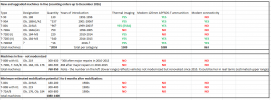
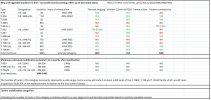

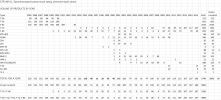
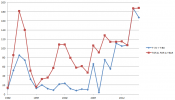

 of course, we are talking about the T-72
of course, we are talking about the T-72 